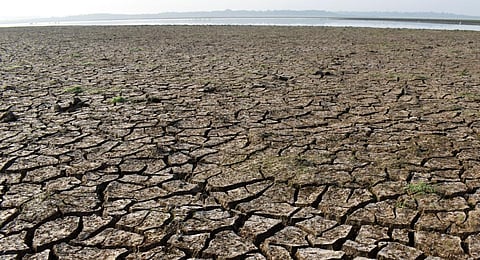

NEW DELHI: The southwest monsoon is heading towards a record dry spell as the impact of El Nino is getting stronger. It has led to a huge deficient monsoon in the first two weeks of August, leading to a 6 per cent deficit in rains countrywide. On the contrary, the monsoon was 6 per cent surplus by July 31.
The El Nino weather events are characterised by weaker monsoon in India, due to an increase in sea surface temperature in the central and eastern Pacific Ocean. The Indian Meteorological Department has registered a record 11 days of continuous dry spells in the core parts of central India (the region represents all-India rainfall). Experts say the dry spell days will continue for another 3-4 days.
Since August 4, the daily average rainfall over the core monsoon zone region has been too low. The standard rainfall anomaly over the core monsoon region is less than one per cent. Such anomalies were noticed for a few days in early June and July, this monsoon. There are over 110 days of active normal southwest monsoon in India. Out of it, 11 days are recorded as the average dry spell days. Extension beyond 11 days is a rare phenomenon.
“The continuous extension of a dry spell over 11 days is quite a rare phenomenon,” according to Dr Madhavan Nair Rajeevan, former secretary, Ministry of Earth Sciences.
“The current monsoon break spell is one of the most prolonged spells on record. It has been already 11 days. It is likely to continue for 2-3 days more,” said Rajeevan. The longest consecutive break spell was in 1972, which was a deficient year. This second longest was in 2002.
Earlier, in 1972, the dry spell continued for 47 days from 18 June to 3 August 1972, and it was considered a deficient year. In 2002, there were 24 days of dry spells in July, but this was not continuous. “In July 2002, the first dry spell was 11 days and another dry spell was 13 days in a row,” said Rajeevan.
Experts said the El Nino weather events have started impacting the Indian monsoon. The meteorological department, in its early monsoon forecast, had also mentioned the impact of El Nino weather events by the second half of the monsoon.
In its latest briefing, the IMD said weaker rainfall activity is likely to continue across the country for the next 4-5 days except over central and eastern India. Rainfall activity in central and eastern India is likely to activate by August 17, the department said.
In its latest forecast, the Australian Bureau of Meteorology has predicted that the El Nino impact would likely hit the southern hemisphere between the months of September and November this year.